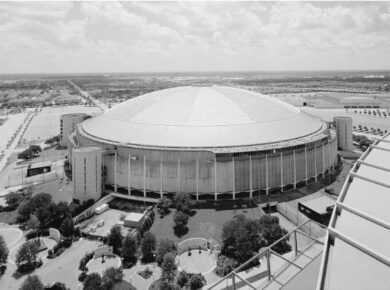The Henry Hudson Bridge is a steel arch toll bridge in New York City across the Spuyten Duyvil Creek. The bridge was designed by David B. Steinman, drawing upon his 1911 Ph.D. thesis in civil engineering at Columbia University. It was the longest plate girder arch and fixed arch bridge in the world when it opened in 1936.

Photo: Jag9889
At the time of its construction, it was considered an engineering marvel, especially given the fact that it took only 18 months to build. It has since been dethroned as the world’s longest fixed arch bridge, not even making it onto the list of the top 50 spans. The bridge has two roadway levels carrying a total of seven traffic lanes and a pedestrian walkway.

Photo: Flickr: Henry Hudson Bridge
The original single-deck structure opened on December 11, 1936. The upper level of the bridge was designed to be added at a later date and opened to traffic on May 7, 1938. A rehabilitation project commenced in 2000 and was carried out by Steinman, Boynton, Gronquist and Birdsall, a successor of David B. Steinman’s firm.

Photo: Henry Hudson Bridge Uploaded by tm
The bridge was renovated from late 2017 to late 2020. The $86 million project replaced the last remnants of the original upper and lower decks, reopened the pedestrian and cycling path, eliminated the lower-level toll booth, upgraded roadway lighting, and made seismic improvements.

Photo: Flickr: HH RAS 6_19_1936
About the Author:

Bruno Dursin – Managing Director at Believe in Steel. Bruno has more than 30 years of experience in promoting steel & steel solutions. His clients benefit from his extensive network within the building industry.



